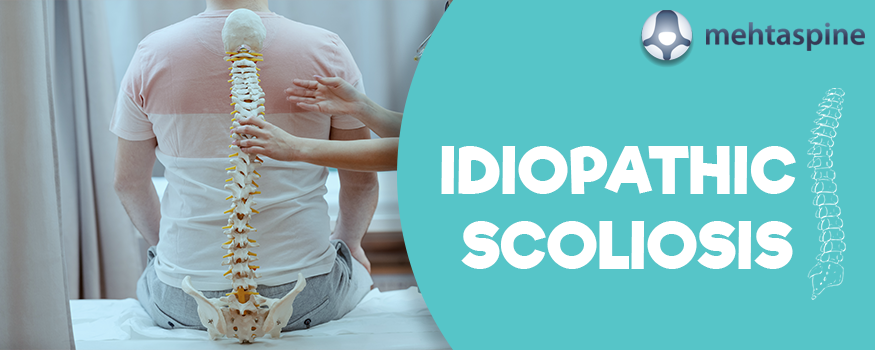Idiopathic Scoliosis
A complicated spinal disorder called idiopathic scoliosis is characterised by an unnatural lateral curve of the spine. The term “idiopathic” designates a disorder for which there is no recognised aetiology. When the spine is undergoing fast expansion, such as during childhood or adolescence, it often presents itself. Although the precise aetiology of idiopathic scoliosis is unknown, genetic and environmental factors are thought to contribute to its occurrence.
There are several types of idiopathic scoliosis, and both boys and girls may be affected by this illness. However, girls are more prone to develop progressive curves that call for medical attention. Idiopathic scoliosis can range greatly in severity, with mild examples having little to no effect on everyday activities, while more severe cases may result in major spine abnormalities and functional restrictions.
Screening and Diagnosis
Though doctors are uncertain if idiopathic scoliosis is hereditary, idiopathic scoliosis screening is crucial for detecting the illness early and starting the right therapy. Early identification is essential because therapies that are put in place during times of fast growth can better control how scoliosis curves evolve.
Since idiopathic scoliosis most frequently manifests throughout childhood and adolescence, routine scoliosis tests are frequently carried out during these years. Simple evaluations that look at spine symmetry and alignment are frequently part of paediatric doctor visits and screenings done at schools.
Early scoliosis detection allows for prompt treatment and the prospect of less intrusive procedures. Healthcare professionals will assess a patient’s spine during a physical examination by looking for obvious indications of curvature or asymmetry. To gauge the spine’s flexibility, they could urge the person to make certain motions or bend forward.
These tests assist in determining if other diagnostic procedures, such as X-rays, are required. For those near the England capital, it is crucial to highlight that scoliosis screens and diagnoses have to be carried out by qualified medical experts, such orthopaedic doctors or paediatricians with expertise in treating spine disorders or scoliosis specialists in London. Diagnostic approaches can also change based on the healthcare environment and the available resources.
Treatment Approaches
A “watch and wait” strategy may be used when the spinal curvature is moderate (usually less than 25 degrees), and the person is still developing. The evolution of the curve is monitored often by clinical exams and sporadic X-rays by healthcare professionals.
For severe scoliosis (between 25 and 40 degrees) or when the curve exhibits advancement, bracing is frequently advised. Braces are intended to apply corrective stresses to the spine and aid in halting curvature progression.
Surgical surgery may be necessary for severe scoliosis (curves more than 40 degrees) or curves that worsen after conservative treatment. Surgery aims to stabilise the spine and straighten the spine. You may consider scoliosis treatment in Birmingham, London or other cities with good specialists.
Mr Jwalant S. Mehta is a well-known and highly qualified specialist who is known for his proficiency in the treatment of numerous spinal disorders. Mr Mehta is a reputable healthcare practitioner who offers specialised care to people looking for therapy for spinal issues due to his significant experience and thorough understanding.


